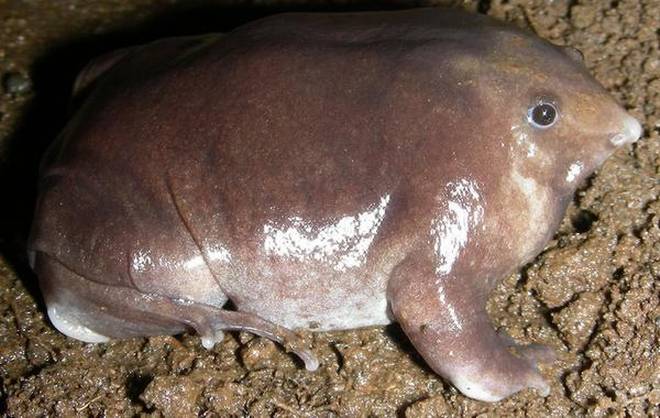Nasikabatrachus bhupathi
- It is a new soil dwelling species of frog that has a snout-shaped nose like a pig, discovered by scientists in Hyderabad.
- It inhabits the eastern slopes of the Western Ghats, near the Srivilliputhur Grizzled Giant Squirrel Wildlife Sanctuary in Tamil Nadu.

- It evoked comparisons with the Purple frog that was first discovered in 2003.
- The Purple frog is an inhabitant of Seychelles.
- The discovery of bhupathi frog is significant as it constitutes additional evidence in favour of the theory of continental drift.
- It suggests that the Indian subcontinent was part of the ancient landmass of Gondwana before splitting from Seychelles 65 million years ago.
Mentor India Campaign
- NITI Aayog is about to launch the Mentor India Campaign.
- It is a strategic nation building initiative to engage leaders who can guide and mentor students at more than 900 Atal Tinkering Labs, established across the country as a part of the Atal Innovation Mission.
- Atal Tinkering Labs are dedicated works spaces where students from Class 6th to Class 12th learn innovation skills and develop ideas that will go on to transform India.
- The labs are powered to acquaint students with state-of-the-art equipment such as 3D printers, robotics & electronics development tools, Internet of things & sensors etc.
- The mission is aimed at maximizing the impact of Atal Tinkering Labs.
Fatbergs
- It is a term used to denote the giant lumps of floating waste produced due to leftover cooking oils and grease washed down the sink mix with solids in the sewers.
- A UK company, Argent Energy, is now mining London sewers and converting these fatbergs into usable fuel.
- The masses are heated to separate the oils and fats from the solid waste.
- The extracted oil is then treated with a few chemicals to yield an industry-standard biodiesel that can be used for a string of purposes.
- Roughly a quarter to two-fifths of a fatberg is converted into biodiesel.
- Fatberg fuel is far more environmentally friendly than, say, a crop-based biodiesel like the one from palm oil—palm farming has caused destruction of rainforests in South East Asian nations.
Effect of climate change
- A new study claims that fish are expected to shrink in size by 20 to 30% as a result of rising ocean temperatures.
- As fishes grow into adulthood, their demand for oxygen increases because their body mass becomes larger.
- However, the surface area of the gills, where oxygen is obtained, does not grow at the same pace as the rest of the body.
- Fish are as cold-blooded animals and so cannot regulate their own body temperatures.
- When their waters get warmer, their metabolism accelerates and they need more oxygen to sustain their body functions.
- Warmer waters increase fish's need for oxygen but climate change will result in less oxygen in the oceans.
- This means that gills have less oxygen to supply to a body that already grows faster than them.
- This forces fish to stop growing at a smaller size to be able to fulfill their needs with the little oxygen available to them
- Smaller fish will have an impact on fisheries production as well as the interaction between organisms in the ecosystems.
Drones to restore Mangroves
- Mangroves protect coastlines in the face of storms and rising sea levels, absorb carbon from the atmosphere, and boost fish stocks.
- Mangroves in Myanmar’s Ayeyarwady Delta are ravaged by decades of deforestation and conversion of land for agriculture and aquaculture.
- Only 16% of original mangrove cover remains.
- There is an “urgent need” to restore mangroves to stem saltwater invasion of farmland and shoreline erosion due to sea level rise, as well as to protect lives and property from storms and floods in coastal areas.
- Around 3 million mangrove trees has been planted so far, but the task is laborious and time-consuming.
- So Drones are used for this purpose.
- Six of them can ‘plant up to one lakh trees per day’ and cut cost by nearly half.
- They can also be used to create a planting pattern, pinpointing the best spots and species to plant in each location.
Appeal to U.N. against weapons of terror
- Hundreds of robotics and artificial intelligence entrepreneurs demanded to the United Nations calling for action to prevent the development of autonomous weapons.
- They warned technological advances could revolutionise warfare and create new “weapons of terror” that target innocent people.
- Once developed, they will permit armed conflict to be fought at a scale greater than ever, and at time scales faster than humans can comprehend.
- The innovators also highlighted the danger that the technology could fall into the wrong hands.
- The renewed plea on autonomous weapons was released at the International Joint Conference on artificial intelligence in Melbourne.
Source: PIB, The Hindu
